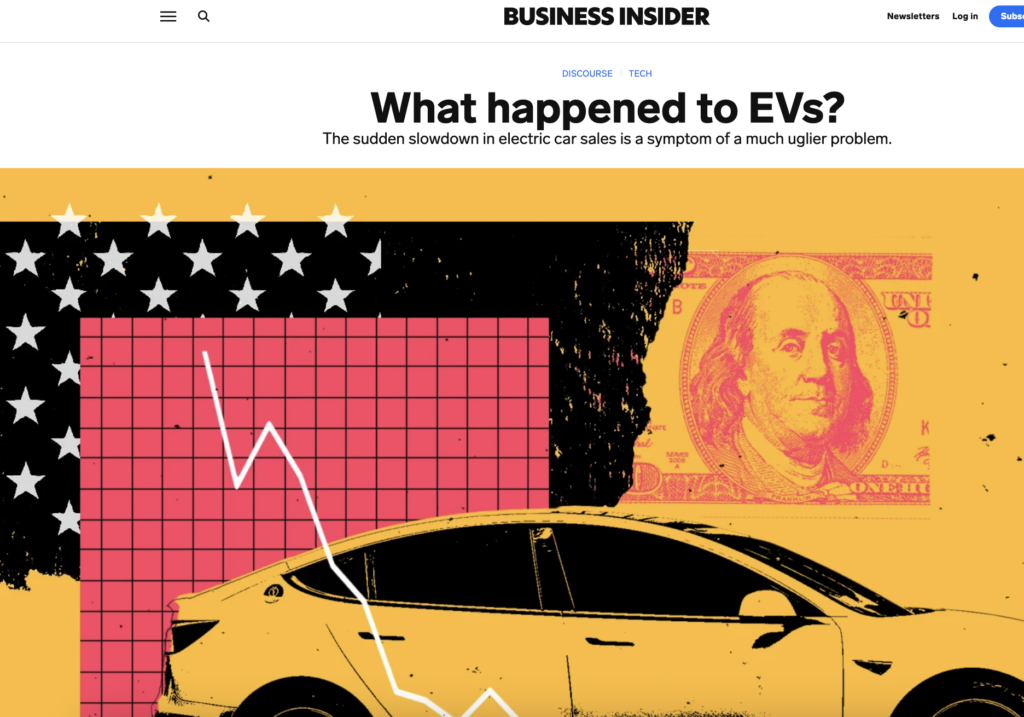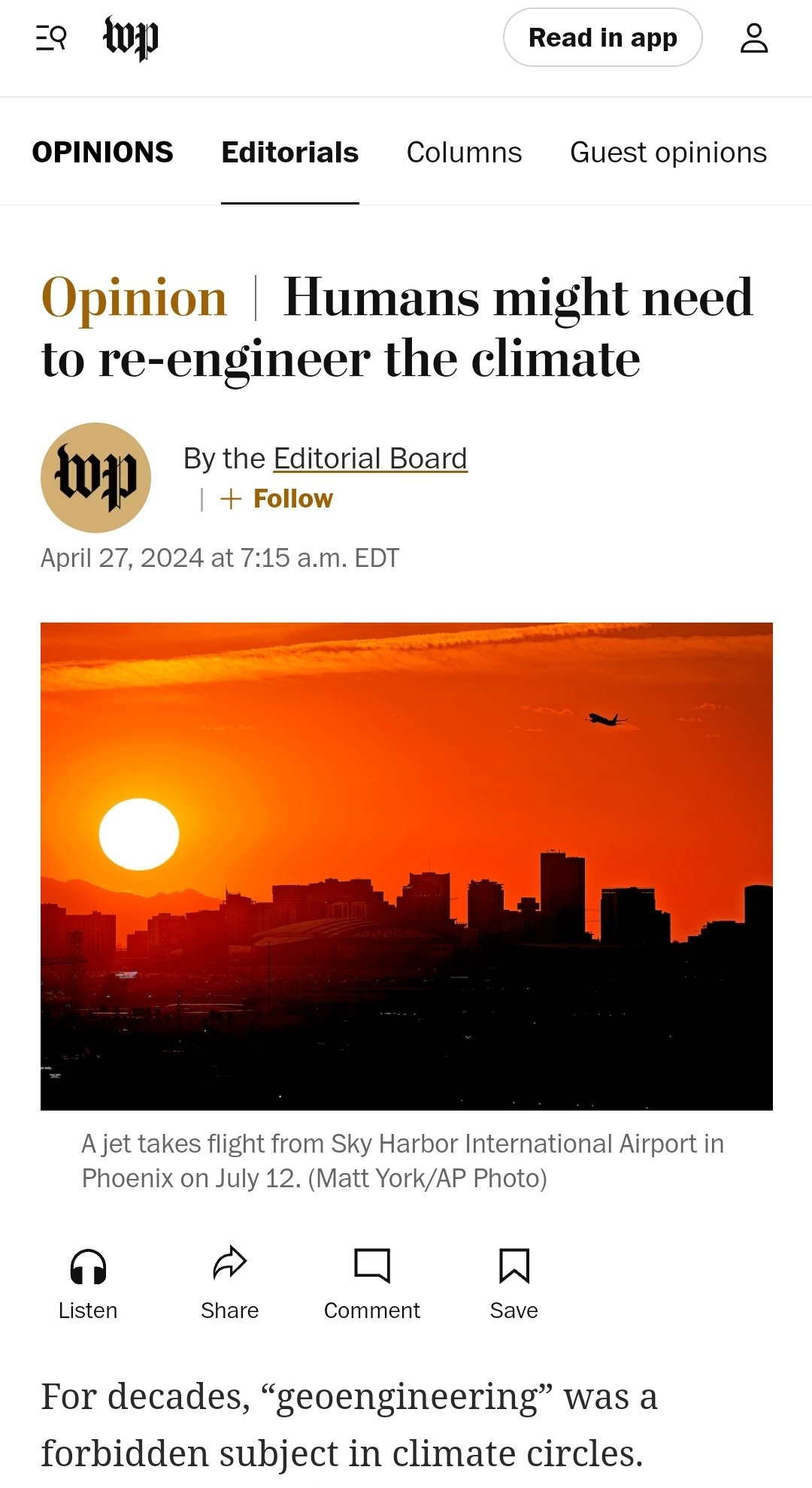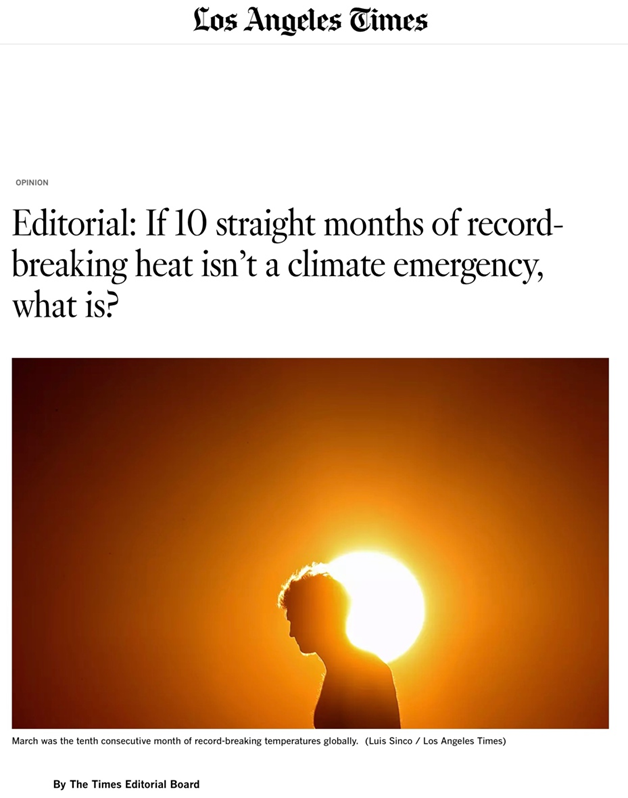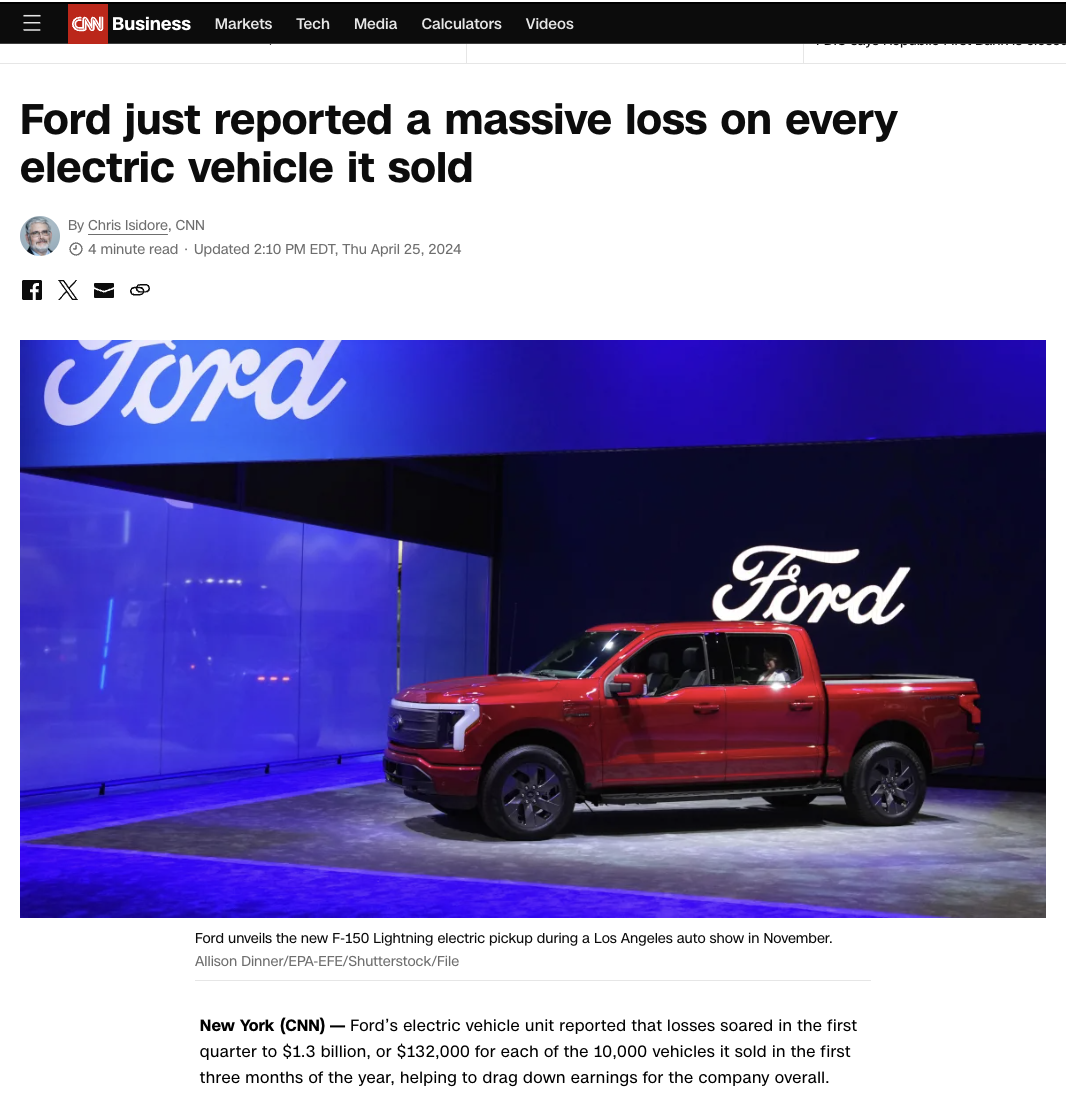Business Insider: Electric vehicles were supposed to be inevitable – But "the electric-vehicle takeover has hit some serious roadblocks…America's EV plan was flawed from the start."https://t.co/u03L4n63TX
— Marc Morano (@ClimateDepot) January 4, 2024
https://www.businessinsider.com/electric-car-ev-sales-prices-problem-transportation-2024-1
Electric vehicles were supposed to be inevitable. Two years ago President Joe Biden climbed behind the wheel of a beefy white electric Hummer to tout his plan to make half of all new cars sold electric by 2030. The following year Congress passed the Inflation Reduction Act, which created a bevy of incentives for drivers to buy electric and for automakers to invest in EVs. That set off a flurry of new projects: EV plants, battery-manufacturing facilities, and mining operations began popping up. By the end of 2022 the situation looked promising: More and more Americans were going electric, and soon everyone would be driving an EV, reducing emissions in the process.
The transition to an all-EV future seemed like a slam dunk. It would not only give the government a highly visible way to show it’s fighting the climate crisis but boost the economy through new jobs and investment. But the electric-vehicle takeover has hit some serious roadblocks.
Sure, sales of EVs keep going up — a record 300,000 cars sold in the US in the third quarter of 2023 were electric — but the pace of adoption has markedly slowed, and analysts have suggested the country is no longer on track to hit the government’s sales targets. The trickle-down effects of this decreased demand are everywhere. EVs accumulated at dealerships this fall, even as automakers cut prices to try to entice customers. Automakers have backtracked on their promised investments: Ford delayed $12 billion of its planned $50 billion investment in EV manufacturing capacity, while General Motors delayed production of key EV models and scrapped a $5 billion partnership with Honda to make cheaper EVs. Even Tesla — once the superstar of EVs — announced it would delay a planned factory in Mexico. Auto execs who were once trumpeting the potential of electric cars are even publicly acknowledging that EVs aren’t working.
Industry analysts have pointed to several reasons for the slowdown, including insufficient charging infrastructure and a lack of affordable EV options. But they’re a symptom of the larger problem: America’s EV plan was flawed from the start. Instead of seeing EVs as one piece of a plan for more sustainable transportation, America has focused on using EVs as a one-to-one replacement for gas guzzlers. But this one-size-fits-all solution fails to address our broader transportation problems, meaning emissions targets are likely to be missed and other transportation problems will continue to go unaddressed.
“The entire myth at the heart of this whole transition is that the battery car seamlessly fits right into the gas car’s position,” Edward Niedermeyer, the author of “Ludicrous: The Unvarnished Story of Tesla Motors,” told me. “It doesn’t, and that’s the problem.”
The EV myth
The mission to replace gas cars with EVs has led to a series of major miscalculations, one of which has to do with the sheer size of the new electric vehicles being put on the road.
Over the past few decades the American auto industry has become obsessed with huge vehicles. The reasons for the size inflation range from profit margins to distorted government fuel standards, but the proliferation of bigger vehicles created a doom loop of consumer preference: Drivers saw the vehicles around them getting bigger, so they wanted bigger cars to make themselves feel safer. Automakers argued that this was proof that people wanted only big cars, so they cut small models and made existing vehicles bigger, which made people with smaller cars feel less safe — you get the picture. Meanwhile, road deaths and injuries soared, while the larger, less efficient vehicles wiped out environmental benefits from higher emissions standards.





